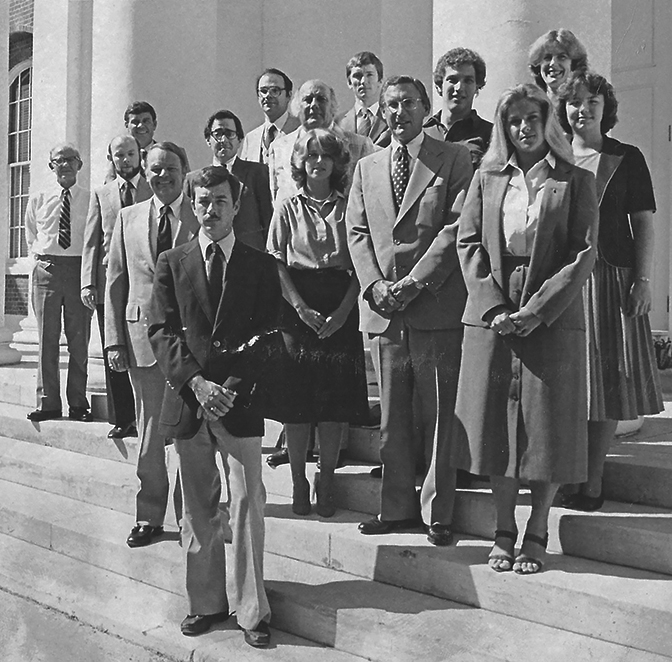Rob Arnett was a young marketing research associate at Frito-Lay tasked with crunching data on ways to better market Tostitos to hungry consumers.
Already boasting Fritos, Doritos, Cheetos and Lay’s potato chips, the company was a giant in the snack game. But by the late 1970s, competition from Kellogg’s (maker of Pringles) and Nabisco (who was adding chips to its cookie and cracker empire) was edging into Frito-Lay territory. Its response was Tostitos, a corn tortilla chip developed in 1978.
This was new territory for Arnett. When he approached graduation in 1981 with a journalism degree in public relations (and a minor in business) from the University of Georgia, he wasn’t sure what he wanted to do. The prospect of working for a small-town newspaper didn’t appeal to him, but a marketing research class he took his senior year did. Despite not having a statistics background, he persevered and did well, catching the attention of Dr. Al Wildt, who taught the class. “We’re starting this program in marketing research,” Arnett remembers him saying. “The first class is full, but you can join the following year if interested.”
He was and did. Now two years later, Arnett, with a Master of Marketing Research degree in hand, sought to keep the mustachioed Pringles guy from storming the Frito-Lay castle.
Arnett was ready for battle.
“We had these brand planning conferences, and I pulled information from a bunch of different sources about Tostitos,” he says. “It turned out there was a lot of circumstantial evidence that said when people are eating Tostitos, they are not by themselves — they are always with other people. It tends to be a situation where you’re going to be sharing Tostitos, you’re going to have salsa, and you’re going to have dip. It was an insight that turned into a marketing strategy for Tostitos, and they were very explicit about using it in their ads for the next 20 years.”
Within two years, Tostitos reached $200 million in sales — it even sponsored a bowl game. What started as a chip expanded into six types of salsas and five different dips.
Why? Because, as the man says, you don’t eat Tostitos by yourself.
“And it’s still in there, I can still see it in there,” Arnett says of the Tostitos branding. “A lot of times you work behind the scenes in the business. You’re never going to be on the cover of Ad Age. But that was something I can point to and say, I came up with that, I came up with the insight that led to that becoming a successful strategy for Tostitos for a very long time.”
How long? On a recent visit to the Tostitos webpage under the About Us section, the sentence atop the page reads:
“Tostitos are more than tortilla chips and dips — they’re an invitation to catch up with friends, so Get Together Already!”
It’s been 40 years, and the insight remains powerful and true.
The same can be said about the MMR program at the Terry College of Business.
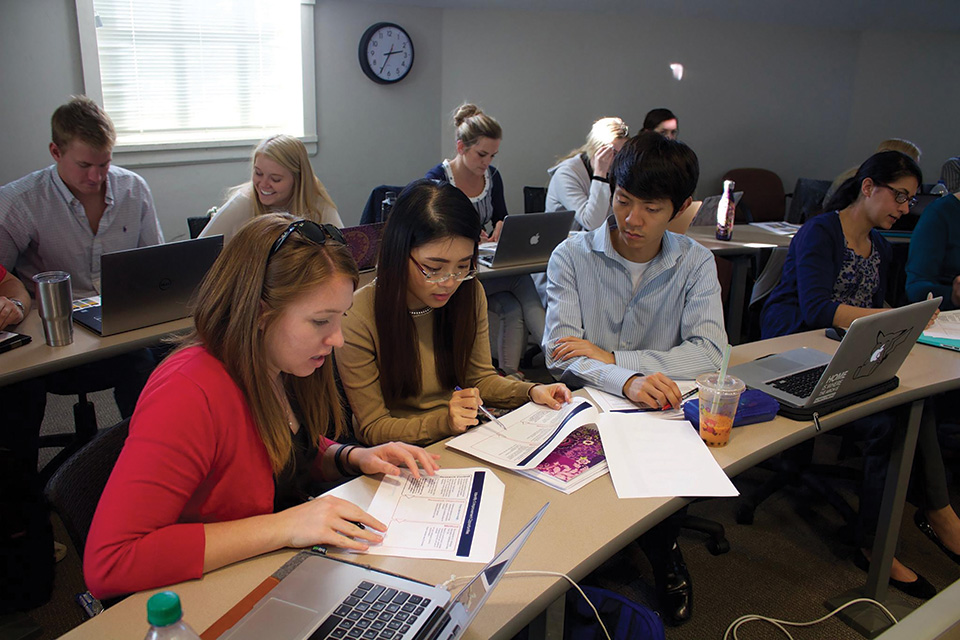
Today
Dr. Marcus Cunha Jr. was born in Brazil and worked and lived around the world. But now he’s in Athens leading a small, high-touch, program with a global reach, taking over as program director in 2017 following Dr. Charlotte Mason’s tenure.
As director of the Master of Marketing Research program, Cunha guides the nation’s first and most renowned program of its kind. The initial MMR class of six students graduated in 1981, and though there have been several changes in the curriculum, professors and venues over the four decades, one thing never changes: At the end of the academic year, each graduate gets a job..
This makes sense — large companies launched the program to help them make sense of the incoming rush of data and were quick to benefit from the initiative they created.
“The program started because checkout data started coming available with scanners, and companies like Coca-Cola, Nielsen and M/A/R/C Research had all this new data but didn’t have the skills to analyze it,” Cunha says. “So they decided to launch this program and fund it by creating the Coca-Cola Center for Marketing Studies. … We have companies that recruit from our program every year, and they say it’s because of the quality of our students and that they are ready from day one.”
In its present form, the program gathers two dozen students, and for 11 months the group shares the same classes, seminars, class and corporate projects and events. The MMR advisory board, a panel of industry leaders (oftentimes MMR alums), helps guide instruction in terms of trends and tools of the trade. “Our advisory board is instrumental, because they are the ones out there using the research daily,” Cunha says. “So, they know the needs of the industry.” As a result of this input from the industry, the program curriculum evolves continuously and as a recognition of this evolution the program was recently designated as a Science, Technology, Engineering, and Math (STEM) program.
The main need is finding people to decipher the reams of data pouring in second by second, which is not the same as analyzing the numbers to find statistical variations. Terry MMR students not only have backgrounds in business, but also sociology, psychology, communications and statistics. While they have the skills to determine the “whats” behind data, they are more focused and attentive to the “hows” and “whys.”
“We have more of an art and science approach to teaching marketing research. Our students are trained to be more like consultants in terms of generating consumer and market insights,” Cunha says. “They know the methods, they know the statistical techniques, but their job is to help organizations to make better decisions with the data that they have. We train our students to do persuasive presentations, create meaningful data visualization, and deliver actionable insights so people can quickly figure out what’s going on in their markets.”
“It was really about taking data to the next level to understand what it can do,” says Cassidy Miller, a senior researcher at Chick-fil-A who earned her MMR in 2017. “Understanding the types of methods and analysis to answer questions and wondering what we can do to get those answers. The program is good at exposing students to research methodology and analytical techniques so when they get out into their fields they are not surprised.”
Four decades of MMR classes have yielded 731 graduates working at 400+ organizations in 61 states or countries. Last year, 50 job offers were extended to 26 students.
“We are recognized around the world,” Cunha says. “A survey that was done in 2017 found that we are recalled three times as much as the other programs combined. It’s a premium product.”
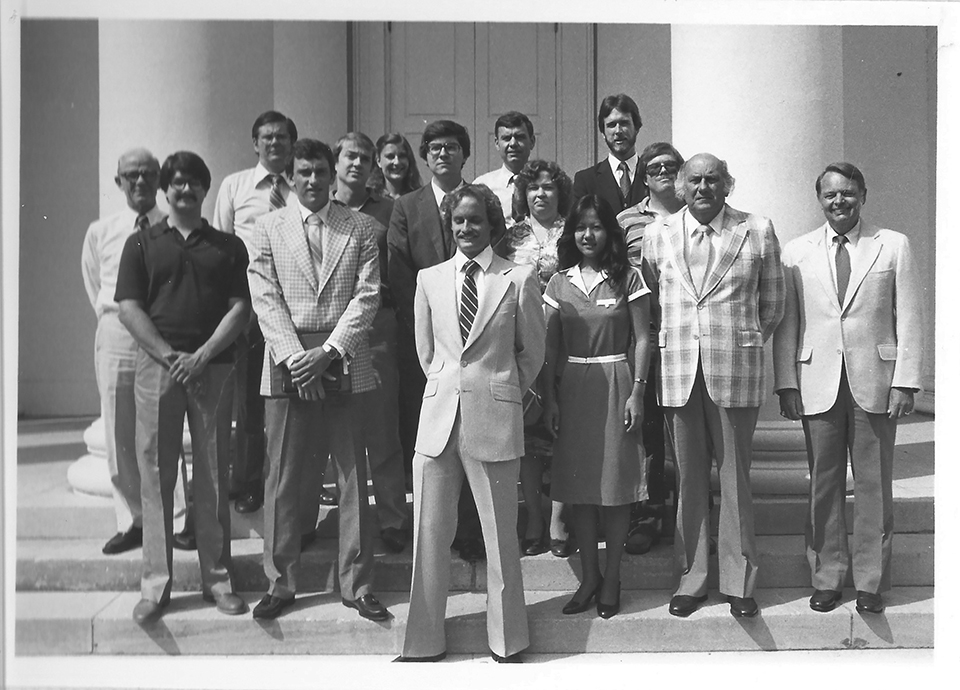
The ’80s
When first dreamed up in 1979, the MMR program was somewhat of a mystery, but one worth exploring. Because it was industry-led, figuring out the academic piece of the puzzle took some fits and starts. But since there were no programs to which it could be compared, the growing pains were part of the learning process. What was clear was the need for a program of its kind.
“The whole concept was brilliant as far as I was concerned,” says Bill Denk, co-owner and managing partner of MMR Research Associates and part of the 1982 MMR class. “A very specialized degree with industry involvement and you had a built-in recruiting of graduates, and it was paid for? It was too good to be true for me, at that time I knew I wanted to try out marketing research as a career.”
Denk and Arnett were two of nine in the ’82 class, getting a healthy dose of statistics, marketing theory and strategy, and consumer behavior. Denk came to the program after working a few years in sales following his graduation from Western Kentucky, where he majored in business administration. The growing element in the classroom was data — it was starting to stream in as new forms of data collection emerged through random digit telephone interviewing, mall intercept interviews, and improved wording in surveys. But for those early students, there remained a premium in gathering that data: “We were not as awash in data and information as we are now,” Arnett says, “you had to go out and get it.”
And once you did get it, “the ability to analyze and synthesize it and make sense of it was a much more laborious prospect,” Denk says. “Even just creating graphs to represent what was in the data was a much bigger effort in the late ’70s and early ’80s.”
For Denk and Arnett, the program was nine months of instruction (including the completion of a dissertation) and six months in an internship — which led them to full-time employment and a career they hold to this day.
By the end of the decade, the program found its footing in the national landscape. “The MMR is the most widely accepted program in the industry,” it reads in the 1988 issue of Georgia Business magazine, “competition for acceptance is intense.”
“The MMR program has been a blessing to me and responsible for my career,” Denk says.
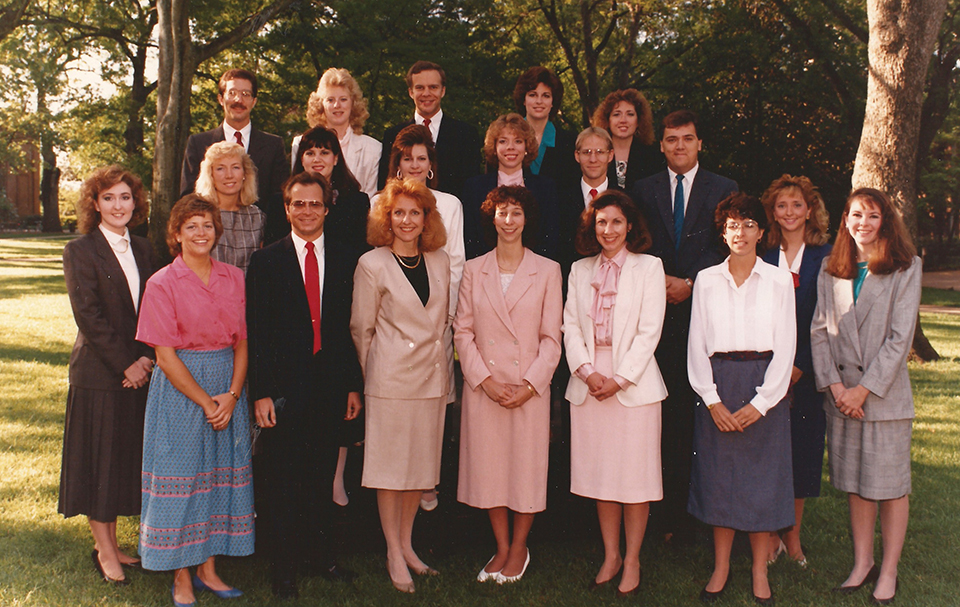
The ’90s
Horatio Alger’s book “Five Hundred Dollars; Or, Jacob Marlowe’s Secret,” published in 1890, includes an extended passage where several main characters are prompted to get jobs in Peoria, Ill. With references to “they will play an engagement in Peoria,” and “we shall play in Peoria,” the book was popular with a young audience and birthed the ubiquitous phrase “Will it play in Peoria?” — meaning if it plays in Peoria, it can play everywhere.
It’s a century later, and Jill Eberle is in her final year earning a marketing degree and minor in psychology at Bradley University, a private university in Peoria. She went into Bradley thinking about going into behavioral psychology but reoriented to business and market research. During her senior year the university debuted its first class in market research. “I thought that was interesting because it was a blend of marketing and psychology,” she says. “I loved the class, and I was intrigued by the field.”
It so happened that her professor knew about the UGA’s MMR program and steered her toward it. “UGA’s program was much stronger than the others because it is both corporate and academic, and that was appealing.”
A decade after it began, the Georgia MMR program was playing in Peoria.
Eberle, a partner at Lynx Research Consulting in Denver, came to Athens in 1990 and joined 15 others in her MMR cohort. While there remained an element of data collection in her studies, the rise of computers moved the program’s focus from data gathering to data analysis.
“There were levels of statistics and advanced analytics,” she says. “There were courses around experimental design, sample and sampling error. Dr. (Richard) Fox, one of the most beloved professors of that program, taught courses with a little more practical application, and we did have a class project. … At the time quality strategy, customer satisfaction and loyalty were starting to emerge. It was huge in terms of corporate client interest and demand for that kind of information.”
She remembers spending her “whole waking hours” with her cohort mates, developing strong bonds and work habits. “It’s an intense program so we had to get through it together.”
After earning her degree, Eberle took a job with M/A/R/C Research, a marketing research consulting firm based in Texas. “I felt immediately immersed in what was going on with the work,” Eberle says of her transition from graduate school to full-time professional work. “It was a seamless move.”
She has been at Lynx for nearly 20 years, but her ties with the MMR program remain strong. She coordinates the MMR mentor program, matching up alumni volunteers with current students, where they serve as a coach and a guide in job searches and career paths.
“There are so many people who have gone through that program that it is such a valuable component for them,” she says. “Some of my best friends on the planet are people I went through the program with. So much of my career success has been through the connections I got through the MMR program.”
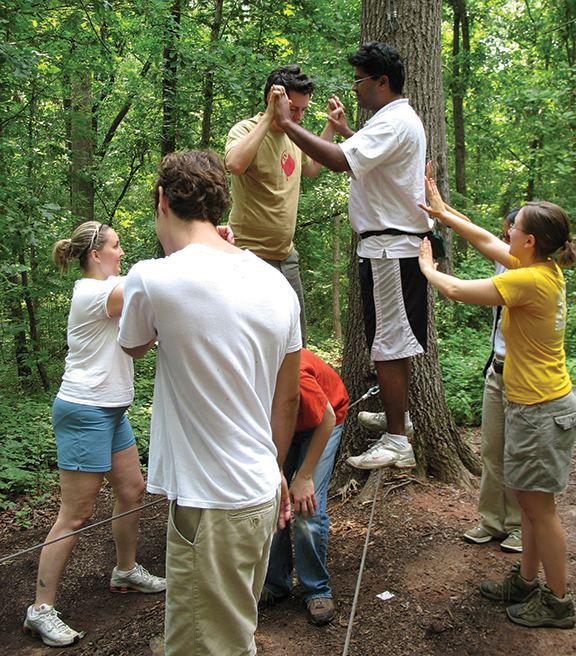
The 00’s
Manish Gupta is always looking forward. In a career filled with blue-chip global companies — JPMorgan Chase, Yahoo!, eBay, Google, and now Facebook — Gupta was in the MMR program at an integral time. It was 2001, and the rise of the internet was changing how data was perceived and delivered, opening the world to uncharted waters.
“We started to be on the cusp of breaking into new fields and areas,” says Gupta, who now serves as director of strategy, operations and insights at Facebook. “There was a shift from theory market research to how the theory needs to be applied. Bringing in industry preview was starting to happen — looking at what the industry wants and where the industry is heading. And there was even more technology. It was the time when internet service was starting to ramp up, and an acknowledgment of new data and new ways of data collection was happening at the same time.”
Gupta came into the MMR holding a degree in physics and an MBA in marketing, looking for “a program that would be a good combination of the art and science of marketing.” He found that in Athens. He also discovered the key to thriving in the field: the ability to tell a story through data. What changed in the 2000s from previous decades was that getting data was no longer a problem: The problem was not having enough people to decipher it.
“One thing that is clear to me is nobody is wowed by your depth of methodological experiences and ability to try new complex projects, that is almost expected,” he says. “What stands out is what do you do with it? How do you use the information and connect it with other sources in a hypothesis that already exists, or doesn’t exist, to tell a story and influence a discussion that leads to a change?”
He credits the MMR program for pairing students with industries to tell these stories through gleaned insights — insights that might not mean anything for years. Talking to industry leaders as students makes them much more valuable once they become employees. His training at UGA served as a basis for what he does now at Facebook — trying to determine the future to keep companies viable for decades.
“At Facebook Reality Labs, a lot of the technologies we are working on won’t be commercialized for at least 8 to 10 years, if not more,” he says. “You’re trying to anticipate a consumer reaction or belief of where the viewers might be. Being able to convince viewers of that through your work has been the most fascinating to me.”
The ’10s
From a technology standpoint, the first decade of the 21st century moved at a brisk pace. The internet exploded, the iPhone soon followed, and the advent of social media was quickly on its heels.
When Tricia Houston arrived in Athens in 2009, joining her large MMR cohort of 28 students, data was king. In 2006 Clive Humby, a data analysis specialist who founded the global consumer insights business dunnhumby (where several MMR students would work), coined the phrase, “Data is the new oil.” Michael Palmer, the executive vice president of member relations at the Association of National Advertisers added to Humby’s phrase by noting data is “valuable, but if unrefined it cannot really be used.”
The MMR program was in the refining business.
“You’re not going to Georgia to learn how to gather the data,” says Houston, who is the founder and COO of MMR LIVE Experience Design. “Thinking back to 1980, you had to know how to go door to door — getting the data was the skill. When I was there, there was so much data we didn’t know what to do with it, but we were starting to figure that out. We had a customer lifetime value class that used these big data sets, which is the norm nowadays. The value you’re learning at Georgia is how to sift through all the noise to get to what matters.”
But there remained an old-school touch as well. In what she called “market research trade school immersion boot camp,” Houston was drilled in advanced techniques and tools of the trade. After graduation, when she went to work for The Home Depot, she was able “to talk intelligently” to internal and external clients about what the suppliers were up to. “It was fabulous in terms of setting us up for success in the future,” she says.
Cassidy Miller came to the MMR from Disney World, where she worked in guest relations. She earned a PR degree from UGA but found a love for marketing campaign data and email campaigns while working a short stint with a nonprofit.
When she arrived in 2016 there remained a steady diet of the courses that existed throughout the life of the program, but the new wrinkle was its attention to soft skills. Now with a speaker series, an interview prep seminar, and a constant stream of professionals and alumni coming in to talk to the cohort, the MMR program was fully training students to make persuasive arguments.
“There was an overview on how to conduct qualitative interviews and other techniques, such as observations and focus groups,” Miller says. “We concentrated on a high level of understanding with application.”
Miller’s MMR experience, like the program graduates before her, was formative and life changing.
“There is a high expectation of MMR grads because there is a reputation that we do well, but the program is amazing,” she says. “The faculty and staff are amazing. It honestly was the best time of my life.”
It’s a sentiment shared among MMR alums through the decades, partly because the program treats each cohort as a unit instead of individual students. For 11 months, your MMR class is your world.
“We are a high-touch kind of program, we really know the students and they get to know us too,” Cunha says. “We host them at our houses, we have many social and networking events and host a biennial research summit, The Future of Insights, that keep us connected with the alumni and the insights industry (the next one is scheduled for Aug. 10-11, 2022). Our alumni network is very strong and one of the reasons for that is that they get to know each other really well. In our cohort system, they take all courses together and develop really strong ties among themselves and with the program.”
Denk agrees — 40 years later the MMR program has never stopped being a part of his life.
“I was like No. 10 or 12 in the program, and at the time we were thinking ‘it would be really cool if we have an alumni network someday,’” he says. “To see that develop, and for me to now hire many of the graduates that come out of the program, has been very rewarding.”

